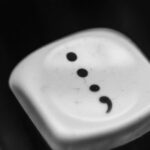
Top 3 Justifications for Sentence Fragments
This post is very.
Let that sink in for a moment. Deep, isn’t it? Unfortunately, it’s also poor grammar. As proofreaders, we know that incomplete sentences are usually unacceptable.
But there are circumstances in which a partial sentence might make sense. Thus, here are our top three reasons to leave sentence fragments be.

Have you let that sink in yet? Come on! It’s freezing outside.
1. For Realism in Speech
Actually, we mean in dialogue. People use sentence fragments in speech all the time, so if a client is writing dialogue then using fragments may make it feel more realistic.
For example, take the following familiar exchange:
‘I saw a mouse.’
‘Where?’
‘There on the stair.’
‘Where on the stair?’
‘Right there.’
Catchy. However, edit it for formal grammar and you get the following:
‘I saw a mouse.’
‘Where did you see it?’
‘I saw it there on the stair.’
‘Where on the stair was it?’
‘It was right there.’
…Not so catchy.
Oh, and hopefully you don’t interrupt people you’re talking to with corrections anyway, but the same guidelines about letting the odd fragment slide apply during actual conversations!
2. For Artistic Effect in Creative Writing
Outside of formal essays or business documents, writers can be more creative with their grammar. That doesn’t mean there’s no space for proofreading, but it does mean that clients can use sentence fragments to create a sense of disjointedness or urgency.
However, this can be overdone. If a text is beginning to look like a stream-of-consciousness shopping list, it might be time to leave a helpful comment.
3. For Emphasis or Variety in Informal Writing
Finally, sentence fragments can improve the flow of informal writing if used sparingly. Like this! You might have noticed that we use some fragment sentences in our blog. They help to convey a casual tone, and (we hope) prevent the blog from reading like a grammar textbook.
They can also be used for emphasis: The dog was cute. But stinky!
For example, adding the extra pause here (i.e. the full stop before the sentence fragment) highlights the contrast between ‘cute’ and ‘stinky’.




